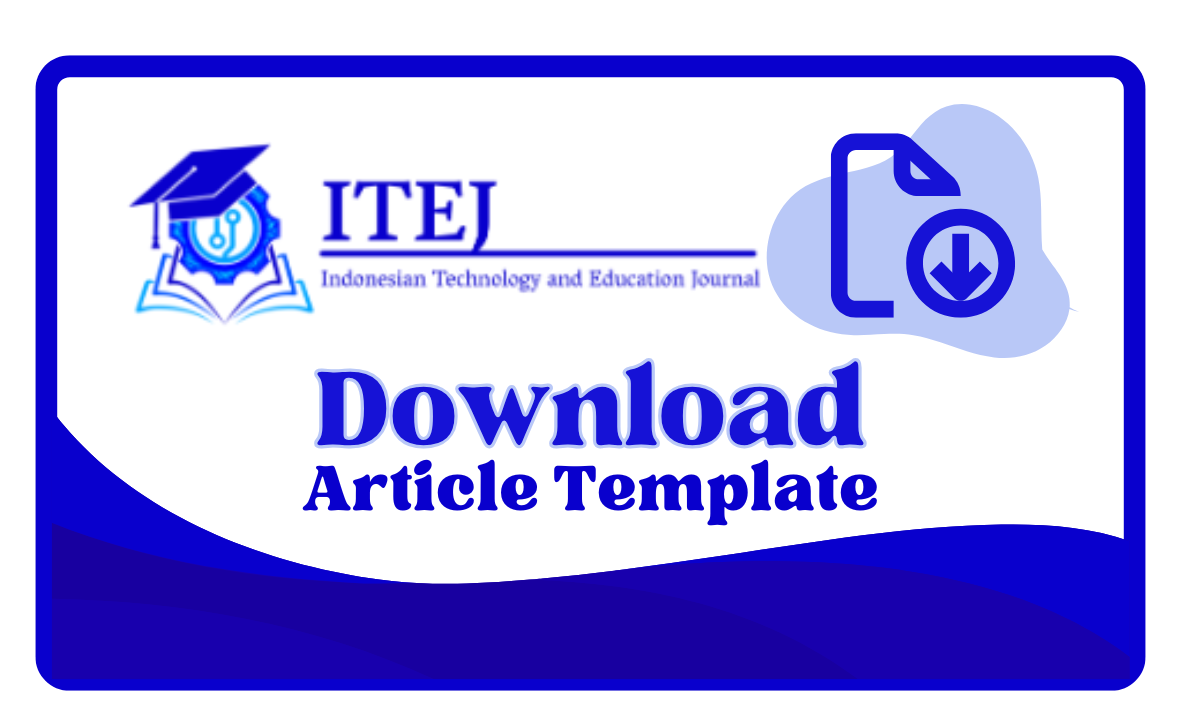Application Development for Fasting and Worship Management Ramadan Using the Incremental Method: Kareem
Keywords:
Android app, Ramadan Workship, Incremental, Time Management, Digital spiritualityAbstract
The development of Artificial Intelligence (AI) in education, especially in design teaching, offers great potential to improve students' creativity, reflection, and design thinking mindset. This study aims to evaluate the effect of AI integration in design-based learning on students' creative thinking ability, reflection, and design mindset. The study used quantitative methods with a cross-sectional design, involving 82 respondents from various departments in higher education institutions. The research instrument was a questionnaire covering aspects of creativity, reflection, and design mindset. The data analysis technique used descriptive analysis. The results showed that 59.76% of the respondents were 19 years old, and most (85.37%) were 3rd semester students. The use of AI in design-based learning was proven to increase student creativity with an average score of 3.66 on a scale of 5, strengthen reflection skills with an average of 3.63, and improve design thinking mindset with an average of 3.75. However, the results also revealed that AI is more effective as a supporting tool in the learning process rather than replacing direct interaction between students and educators. Therefore, AI can be integrated as a tool that supports creativity, but still requires the role of human guidance.
 Abstract views: 67
,
Abstract views: 67
,  PDF downloads: 29
PDF downloads: 29
Downloads
References
H. Lisa, Mardiah, and M. Napratilora, “Program Pesantren Kilat Ramadhan untuk Meningkatkan Motivasi Ibadah Siswa SMPN 3 Tembilahan Hulu,” ABDIMASY: Jurnal Pengabdian dan Pemberdayaan Masyarakat, vol. 1, no. 2, pp. 63–74, 2020, doi: 10.46963/ams.v1i2.268.
A. A. Kurniawan, M. A. Izzuddin, and F. M. Amin, “Penerapan Agile Unified Process Pada Pengembangan Aplikasi Puasa Ramadhan Berbasis Mobile Android,” Systematics: Information Systems and Informatics Journal, vol. 5, no. 2, pp. 28–36, 2019, doi: 10.29080/systemic.v5i2.740.
F. N. Monalisa, R. Akmalia, A. S. S. Harahap, and P. F. Aulia, “Upaya dalam Menumbuhkan Karakter Agamis Siswa pada Bulan Suci Ramadhan di Madrasah Tsanawiyyah Negeri Binjai,” Fondatia: Jurnal Pendidikan Dasar, vol. 6, no. 2, pp. 206–222, 2022, doi: 10.36088/fondatia.v6i2.1791.
R. R. Fadillah, D. B. Alfarizy, and A. Rafaendra, “Agama dan Era Digital: Tantangan dan Peluang dalam Mempertahankan Nilai-Nilai Keagamaan,” Jurnal Agama dan Lintas Budaya, vol. 5, no. 2, pp. 151–165, 2024, [Online]. Available: https://maryamsejahtera.com/index.php/Education/index
Zahraini, Akib, Rosidin, and O. Sulaeman, “Islamic Education Reform in the Digital Age: Challenges and Opportunities for a Modern Curriculum,” Jurnal Noesantara Islamic Studies, vol. 2, no. 1, pp. 1–11, 2025, doi: 10.70177/jnis.v2i1.1841.
N. A. Mar, “Integration of Technology and Islamic Education in the Digital Era: Challenges, Opportunities and Strategies,” Journal of Scientific Insight, vol. 4, no. 4, pp. 69–84, 2019, doi: 10.69930/jsi.v1i1.74.
M. Gilang Ramadhan, M. A. Alif, M. I. Hidajat, P. Nirmala, N. Agusnaya, and W. Hidayat, “PERANCANGAN APLIKASI RESERVASI FUTSAL (FUTSAL-IN) GUNA MEMPERMUDAH PEMESANAN APLIKASI SECARA ONLINE”, [Online]. Available: https://journal.diginus.id/index.php/decoding
G. G. Ramadhan, A. H. Brata, and K. C. Brata, “Pengembangan Aplikasi Perangkat Bergerak Manajemen Ibadah Harian Umat Islam Berbasis Android,” Jurnal Pengembangan Teknologi Informasi dan Ilmu Komputer, vol. 5, no. 3, pp. 1190–1195, 2021, [Online]. Available: http://jptiik.ub.ac.id/
S. Rahmah and M. F. Hadi, “Pengaruh Penggunaan Aplikasi Pembelajaran Berbasis Android Terhadap Motivasi Belajar Siswa,” Teknologi Pendidikan, vol. 2, no. 1, pp. 89–96, 2023, doi: 10.56854/tp.v2i1.223.
M. C. Cahyani, D. Nababan, and Risald, “Aplikasi Penuntun Pelaksanaaan Ibadah Puasa Ramadhan Berbasis Android,” METHOMIKA: Jurnal Manajemen Informatika dan Komputerisasi Akuntansi, vol. 6, no. 2, pp. 117–123, 2022, doi: 10.46880/jmika.vol6no2.pp117-123.
I. Larasati, A. N. Yusril, and P. A. Zukri, “Systematic Literature Review Analisis Metode Agile Dalam Pengembangan Aplikasi Mobile,” in SISTEMASI, 2021, p. 369. doi: 10.32520/stmsi.v10i2.1237.
I. P. Dewi, L. Mursyida, and A. D. Samala, Dasar-dasar Android Studio Dan Membuat Aplikasi Mobile Sederhana, vol. 10. Widina Bhakti Persada Bandung, 2021. [Online]. Available: https://repository.penerbitwidina.com/publications/345659/dasar-dasar-android-studio-dan-membuat-aplikasi-mobile-sederhana#cite
F. R. Chan, H. Dusri, M. Ramdhani, Hanifah, and L. Efriyanti, “Perancangan Aplikasi Pengelolaan Gudang Berbasis Android Menggunakan Android Studio,” Jurnal Informatics and Advanced Computing, vol. 3, no. 2, pp. 103–107, 2022, doi: 10.35814/jiac.v3i2.4522.
G. E. Peta, Z. Ilhan, and A. S. Muhammad, “Perancangan Sistem Informasi Masjid Nurut Taqwa Berbasis Web dengan Metode Incremental,” Scientia Sacra: Jurnal Sains, Teknologi dan Masyarakat, vol. 3, no. 2, pp. 176–189, 2023, [Online]. Available: https://www.pijarpemikiran.com/index.php/Scientia/article/view/509
I. M. A. O. Gunawan, G. Indrawan, and S. Sariyasa, “Pengembangan Sistem Informasi Kemajuan Akademik Menggunakan Model Incremental Berbasis Evaluasi Usability Dan White Box Testing,” SINTECH (Science and Information Technology Journal), vol. 4, no. 1, pp. 67–78, 2021, doi: 10.31598/sintechjournal.v4i1.661.
V. Rafida, “Penerapan Model Incremental Delivery pada Pengembangan Aplikasi Sistem Informasi Hotel Cipta Jakarta,” URANUS: Jurnal Ilmiah Teknik Elektro, Sains dan Informatika, vol. 2, no. 4, pp. 41–70, 2024, doi: 10.61132/uranus.v2i4.469.
F. Badri and S. U. R. Sari, “Sistem Informasi Manajemen Penjualan Obat Pada Apotek Berbasis Web Dengan Menggunakan Metode Incremental Model,” Jurnal Sistem Informasi dan Informatika, vol. 1, no. 2, p. 70, 2023, [Online]. Available: http://jurnal.unidha.ac.id/index.php/jteksis
S. F. A. Khan, A. F. Novianti, J. N. Dini, and A. M. R., “Pengembangan Sistem Informasi Muna Barat Satisfaction Survey System (MUARA),” Indonesian Technology Education Journal, vol. 2, no. 2, pp. 157–171, 2024, doi: 10.61255/itej.v2i2.426.
M. Melinda, S. R. R. Na, Y. Nurdin, and Y. Yunidar, “Implementation of System Development Life Cycle (SDLC) on IoT-Based Lending Locker Application,” J. RESTI (Rekayasa Sistem dan Teknologi Informasi), vol. 7, no. 4, pp. 982–987, 2023, doi: 10.29207/resti.v7i4.5047.
K. Rokoyah, Y. I. Chandra, and S. Lukman, “Penerapan Model Incremental dalam Merancang Aplikasi Pengenalan Bentuk dan Fungsi Gigi Pada Manusia,” Jurnal Ilmiah SIKOMTEK, vol. 12, no. 2, pp. 42–47, 2022, [Online]. Available: https://sikomtek.jakstik.ac.id/index.php/jurnalsikomtek/article/view/18
S. W. Ramdany, S. A. Kaidar, B. Aguchino, C. A. A. Putri, and R. Anggie, “Penerapan UML Class Diagram dalam Perancangan Sistem Informasi Perpustakaan Berbasis Web,” Jurnal Industrial Engineering Systems, vol. 5, no. 1, pp. 30–41, 2024, doi: 10.31599/2e9afp31.
L. Setiyani, “Desain Sistem : Use Case Diagram,” in Seminar Nasional Inovasi dan Adopsi Teknologi, 2021, pp. 246–260. [Online]. Available: https://ejournal.rosma.ac.id/index.php/inotek/article/view/183
S. Al-Fedaghi, “Validation: Conceptual versus Activity Diagram Approaches,” International Journal of Advanced Computer Science and Applications, vol. 12, no. 6, pp. 287–297, 2021, doi: 10.14569/IJACSA.2021.0120632.
H. Malius, Apriyanto, and A. A. H. Dani, “Sistem Informasi Sekolah Berbasis Web Pada Sekolah Dasar Negeri (SDN) 109 Seriti,” Indonesian Journal of Education and Humanities, vol. 1, no. 3, pp. 156–168, 2021.
S. Nabila, A. R. Putri, A. Hafizhah, F. H. Rahmah, and R. Muslikhah, “Pemodelan Diagram UML Pada Perancangan Sistem Aplikasi Konsultasi Hewan Peliharaan Berbasis Android (Studi Kasus: Alopet),” Jur.Ilm.Kom.Bis, vol. 12, no. 2, pp. 130–139, 2021, doi: 10.47927/jikb.v12i2.150.
D. Hanafi, I. A. Prabadhi, and G. B. Hertantyo, “Perancangan Desain User Interface / User Experience: Systematic Literature Review,” JATI (Jurnal Mahasiswa Teknik Informatika), vol. 9, no. 3, pp. 4665–4671, 2025.
K. N. M. Ngafidin, A. Arista, and R. N. S. Amriza, “Implementasi Firebase Realtime Database pada Aplikasi FeedbackMe sebagai Penghubung Guru dan Orang Tua,” J. RESTI (Rekayasa Sistem dan Teknologi Informasi), vol. 5, no. 2, pp. 327–334, 2021, doi: 10.29207/resti.v5i2.2909.
E. Agustian, A. W. Pamungkas, E. Rachman, S. Mulyati, and Yulianti, “Pengujian Aplikasi Sistem Informasi Laboratorium Kesehatan Daerah DKI Jakarta Secara Black Box,” Jurnal Teknologi Sistem Informasi dan Aplikasi, vol. 4, no. 3, pp. 129–137, 2021, doi: 10.32493/jtsi.v4i3.8520.
A. S. Wulandari, A. Saepudin, M. P. Kinanti, Z. Sudesi, A. Saifudin, and Y. Yulianti, “Pengujian Aplikasi Sistem Informasi Akademik Berbasis Web Menggunakan Metode Black Box Testing Equivalence Partitioning,” Jurnal Teknologi Sistem Informasi dan Aplikasi, vol. 5, no. 2, pp. 102–109, 2022, doi: 10.32493/jtsi.v5i2.17561.
H. Gusdevi, S. Kuswayati, M. Iqbal, M. F. A. Bakar, N. Novianti, and R. Ramadan, “Pengujian White-Box Pada Aplikasi Debt Manager Berbasis Android,” Naratif: Jurnal Nasional Riset, Aplikasi dan Teknologi Informasi, vol. 4, no. 1, pp. 11–22, 2022, doi: 10.53580/naratif.v4i1.147.
H. Rafli, “Penerapan Whitebox Testing pada Pengujian Sistem Menggunakan Teknik Basis Path,” Journal of Information Systems and Informatics Engineering, vol. 8, no. 1, pp. 101–111, 2024, [Online]. Available: https://doi.org/10.35145/joisie.v8i1.4229
Downloads
Published
How to Cite
Issue
Section
License
Copyright (c) 2025 Daffa Fakhir, Nabila Al Buqari Jufri, Muh Akhlatul Ihsan, Putri Nirmala, Ummul Khaeri Masna

This work is licensed under a Creative Commons Attribution-ShareAlike 4.0 International License.







